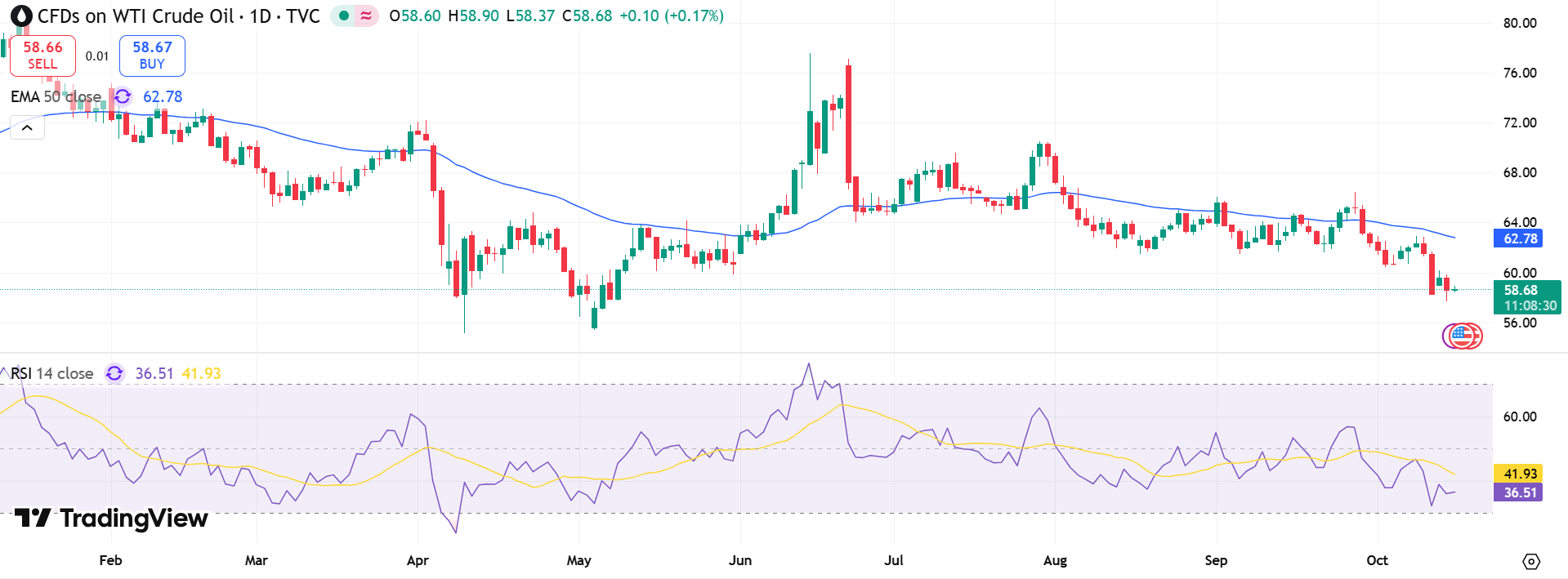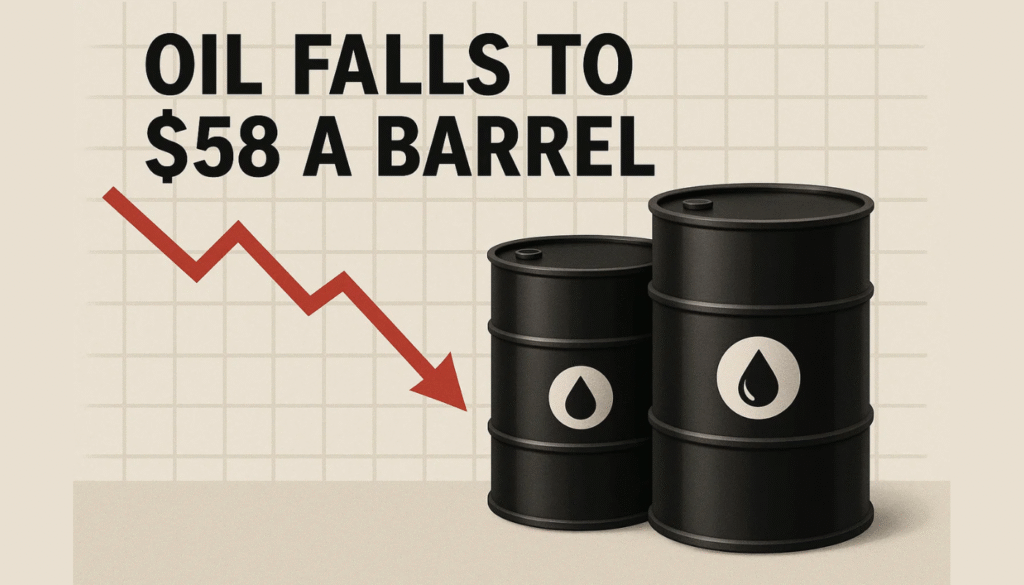Oil prices fell for a second consecutive session on Wednesday, as traders reacted to mounting fears of a supply glut and renewed U.S.–China trade tensions that could dent global energy demand.
Brent crude slipped $0.09, or 0.14%, to $62.30 per barrel at 06:40 GMT, while U.S. West Texas Intermediate (WTI) eased $0.03, or 0.05%, to $58.67. Both benchmarks are now hovering near five-month lows, extending their recent downward trend.
The decline followed a warning from the International Energy Agency (IEA) that the global oil market could face an oversupply of up to 4 million barrels per day in 2026 — a significantly larger surplus than previously projected. The IEA attributed this to rising production from both OPEC+ and non-OPEC nations amid weakening demand recovery.
“The market is focusing on excess supply amid mixed demand signals,” said Emril Jamil, senior oil analyst at LSEG. “Ebbing geopolitical risks and escalating trade tensions are adding further pressure on prices.”
US-China Trade Rift Rekindles Economic Fears
The world’s top two oil consumers — the United States and China — have reignited their trade dispute, casting fresh uncertainty over global growth. Both nations recently imposed new port fees on cargo vessels traveling between them, increasing shipping costs and disrupting trade routes.
The tension escalated after China expanded its rare earth export controls, a move that could affect U.S. tech and defense industries. In response, President Donald Trump threatened to raise tariffs on Chinese imports to 100% and tighten software export curbs starting November 1.
Market analysts say the renewed friction threatens to reduce trade flows, slow manufacturing, and ultimately weaken oil demand.
Key factors worrying traders include:
- Higher shipping and logistics costs due to new port fees.
- Risk of slower industrial output in China and the U.S.
- Potential delays in supply chains, weighing on energy consumption.
“The focus will remain on the escalation in U.S.–China tensions and the risks it poses to the global economy,” said Tony Sycamore, market analyst at IG.
Inventory Data Eyed for Demand Clues

Attention now turns to U.S. inventory data for signs of domestic demand strength. According to a Reuters poll, crude stockpiles likely rose by about 200,000 barrels in the week ending October 10, while gasoline and distillate inventories are expected to have declined.
Traders will be watching two key reports this week:
- The American Petroleum Institute (API) data at 4:30 p.m. EDT (2030 GMT) Wednesday.
- The U.S. Energy Information Administration (EIA) report at 10:30 a.m. EDT (1430 GMT) Thursday.
Both releases were delayed by a day due to the Columbus Day/Indigenous Peoples’ Day holiday earlier in the week.
Analysts believe the reports will determine whether oil prices stabilize or continue their downward trajectory amid fears of oversupply and cooling demand.


